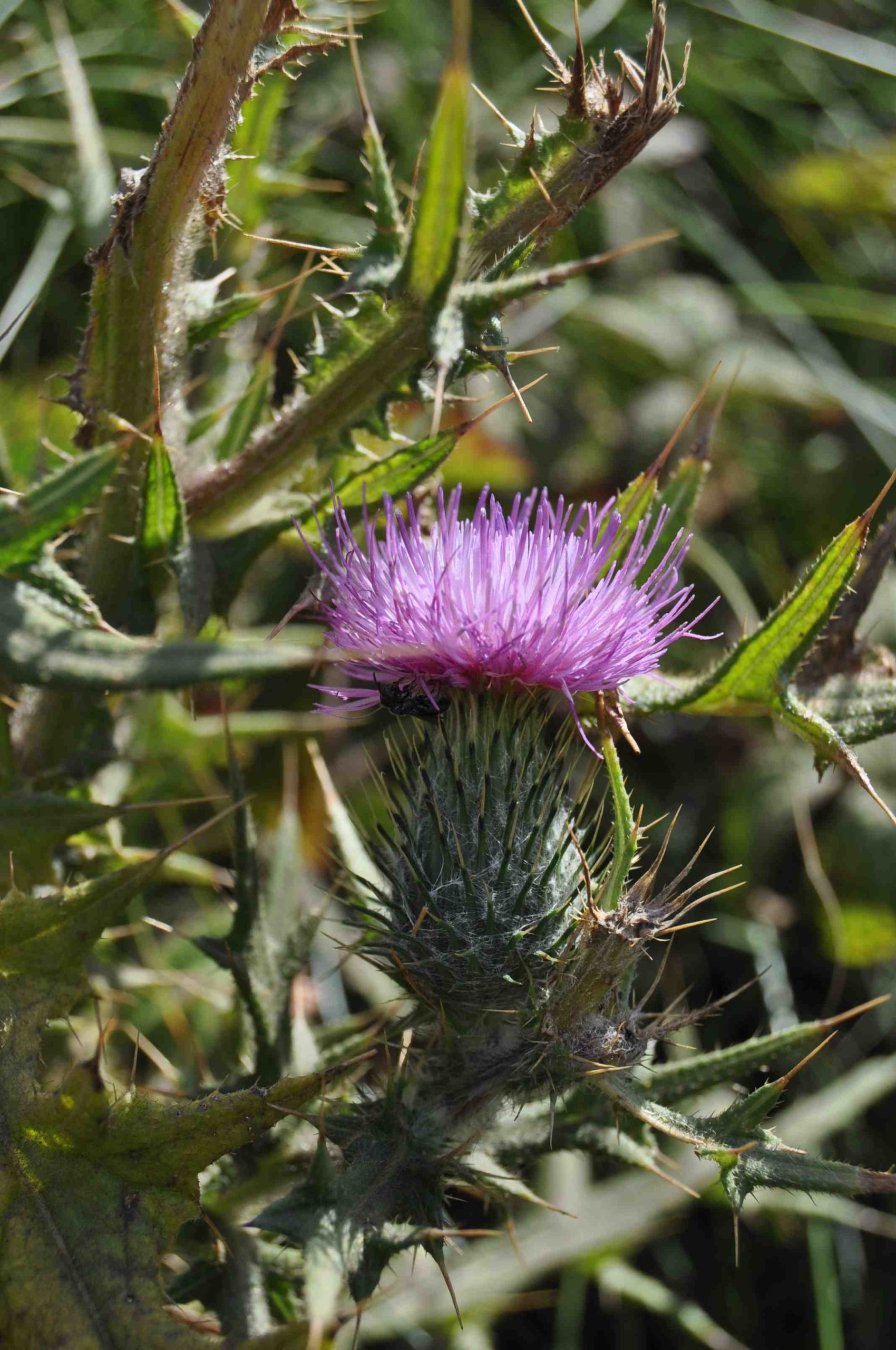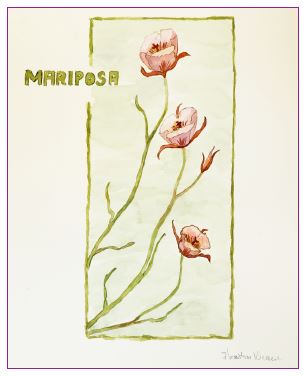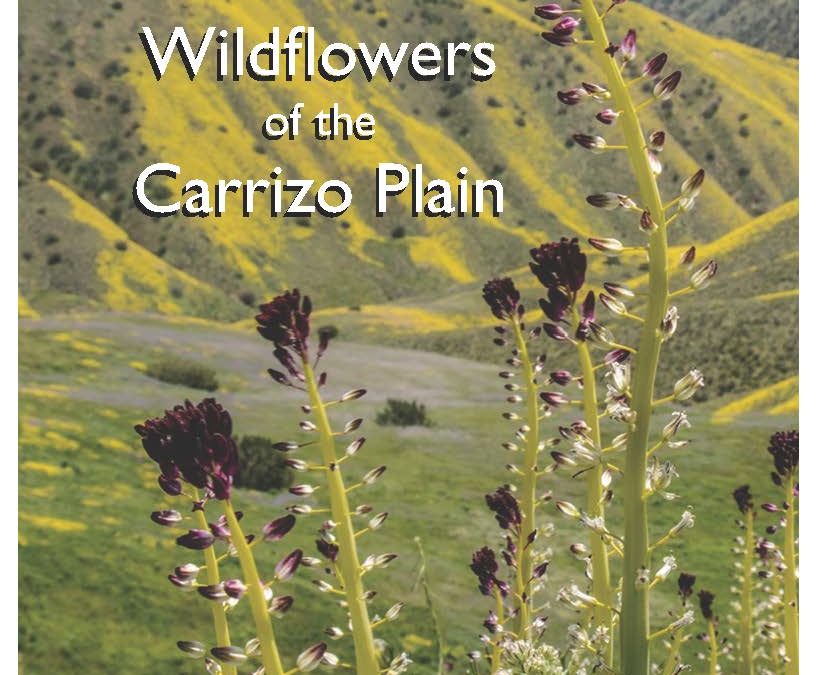SLO Chapter News

Invasive Species Report: Purple Ragwort (Senecio elegans)
An attractive member of the Asteraceae (Sunflower) family Senecio elegans is an erect annual herb, up to 1 ft. tall and to 1.5 ft. wide. It is native to Southern Africa and is distributed along coastal California. In northern San Luis Obispo County there are groups at San Simeon Point and at the other end of the county in the Guadalupe-Nipomo Dunes.

A Few Rare Dune Natural Plant Communities
San Luis Obispo County dunes, and the Oceano dunes surrounding Oso Flaco Lake in particular, are awesome places that are full of rare plants and at least three rare natural communities, as defined by the Manual of California Vegetation …

Where are the flowers
Participate in the new effort to use digital images to investigate phenological change in a biodiversity hotspot – California.

Invasive Species Report: Bull thistle Cirsium vulgare
A member of the Asteraceae family, bull thistle is an annual herb native to Europe and is widespread in California and listed as a noxious weed in Colorado, New Mexico, Oregon and Washington. It is found in every state in the U.S. and on every continent except Antarctica. It is a problem in some natural areas such as Yosemite National Park, California

Tetragonia tetragonoides (New Zealand Spinach)
New Zealand spinach belongs to a family of flowering plants, Aizoaceae, that is primarily native to the Southern Hemisphere. New Zealand spinach is, in fact native to Southern Africa but has spread to New Zealand and is apparently a serious weed throughout southern Australia. Obviously, it has also been introduced into North America and Eurasia.

Clarkia unguiculata (Elegant Clarkia)
Elegant clarkia gets that name because its flowers are beautiful (and elegant) and the plant stands tall (up to 3 feet or more) which adds to its elegance.

Claytonia perfoliata (Miner’s Lettuce)
Heather Johnson has a new watercolor for us to use on the cover of this issue of Obispoensis. It’s most commonly identified around the central coast as miner’s lettuce (Claytonia (Montia) perfoliata). The situation where a leaf blade base appears to be passed through (perforated) by its stem is said to be perfoliate.

Landscaping with California Native Plants
This CNPS-SLO chapter workshop will provide a short lecture followed by field trips to local native plant gardens and a nursery.

CNPS Education Program
our chapter had the opportunity to work with Bev Gingg and Learning Among the Oaks, a program that has been working to introduce young children to the oak woodland community at the Santa Margarita Ranch, and, more recently, at the Pismo Preserve

Mugwort
This plant was used for a variety of uses throughout California. The Chumash made a tea to put on poison oak to relieve the symptoms. They also made a felt cone from the dried leaves to burn on a patients skin to cauterize a wound.

Matilija poppy
The cover of the May-June Obispoensis features a watercolor of Matilija poppy, Romneya coulteri, by Heather Johnson. Dirk Walters provides an introduction and notes to the description written by Alice Meyer back in the 1970’s or early 80’s for the local Audubon Chapter Newsletter.

Lichens
People around the world use lichens for food, medicine, dying wool, and a variety of other uses.

Calochortus (Mariposa lily, fairy lantern and star-tulip)
The native plant on the cover of this Obispoensis is a beautiful rendition of a species of the genus Calochortus. The painting is another of Heather Johnson’s.

Succulent Smuggling Comes to the Central Coast
Last spring, the story of a Dudleya smuggler in Mendocino County hit the news when an observant person noticed something odd while waiting in line at the local post office. (Here's a link to one of the news outlets covering that story.) Now we have our own case of...

Maintaining Garden Tools
February is pruning month and with all the rain its time to get out the pruning tools. A dull, unsharpened tool can be dangerous to use so it is wise to sharpen them before use. Some general rules about sharpening tools. First, always wear gloves when sharpening...

Wildflowers of San Luis Obispo + Wildflowers of the Carrizo Plain
The Revised and Expanded 2nd Edition of our wonderful Wildflowers of San Luis Obispo, California has arrived just in time for the holidays! 20 new plants have been added and the SLO City open space map has been updated including trailhead directions. The new cover photograph of Woolly Blue Curls with the distant view of an oak studded grassy hillside puts you on our Central Coast.

European Beachgrass (Ammophila arenaria)
Ammophila arenaria is in the Poaceae family. It is native to northern Europe and spread from plantings from the late 1800s to the late 1900s. Andrea Pickart has written that European beachgrass is the most pervasive exotic plant species currently threatening coastal dunes on the west coast of the U.S. and is invasive in every major …

Solanum xanti (Blue, Purple, Chaparral, or San Diego Nightshade)
Solanum xanti, Blue nightshade, article accompanied by original watercolor painting by Heather Johnson. Blue nightshade (the name most commonly used around here) is not pushy in its appearance unless it’s in bloom. It is up to a yard tall and the stem is half woody or suffrutescent. The ordinary looking, mostly un-lobed leaves are up to 3 inches long and lanceshaped to oval. Blue nightshade even prefers to grow near other plants and just blend in.
